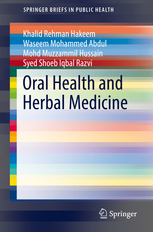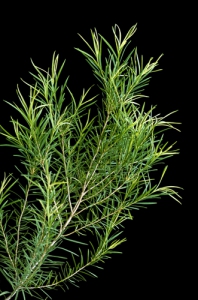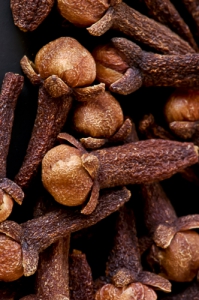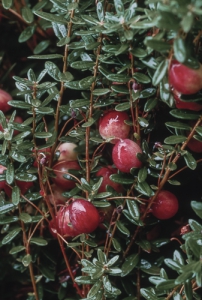By Memory
Elvin-Lewis, PhD Oral Health and Herbal Medicine by Khalid Rehman
Hakeem, Waseem Mohammed Abdul, Mohd Muzzammil Hussain, and Syed Shoeb Iqbal
Razvi. Basel, Switzerland: Springer Nature; 2019. ISBN: 978-3-030-04335-3.
Softcover, 46 pages. $69.99.
 The purpose of this book is to provide examples of medicinal plants that have
been used traditionally for, and are considered valuable against, dental
disease. Not only is it difficult to understand the book’s target audience,
but, with four authors, the presentation is uneven and sometimes professionally
questionable. A clear and succinct presentation of each topic was needed. Some
critical details are missing, glossed over, or referenced rather than clarified
in the text. The lack of coordination among authors was evident, since
discussions about certain facets, such as dental disease, were found throughout
the book rather than being concentrated in one place. Generally, I found the
content disappointing, since much of the richness of Middle Eastern and Indian
dental ethnobotany was not included, and other examples, seemingly picked at
random, lacked a long tradition of use. Moreover, the book should have been
copy-edited appropriately, since colloquial use of English by some of the
authors is evident rather than the type of English expected in a scientific
publication. The purpose of this book is to provide examples of medicinal plants that have
been used traditionally for, and are considered valuable against, dental
disease. Not only is it difficult to understand the book’s target audience,
but, with four authors, the presentation is uneven and sometimes professionally
questionable. A clear and succinct presentation of each topic was needed. Some
critical details are missing, glossed over, or referenced rather than clarified
in the text. The lack of coordination among authors was evident, since
discussions about certain facets, such as dental disease, were found throughout
the book rather than being concentrated in one place. Generally, I found the
content disappointing, since much of the richness of Middle Eastern and Indian
dental ethnobotany was not included, and other examples, seemingly picked at
random, lacked a long tradition of use. Moreover, the book should have been
copy-edited appropriately, since colloquial use of English by some of the
authors is evident rather than the type of English expected in a scientific
publication.
A significant omission was the lack of
information about the acquisition of normal oral microflora and how changes in
the microbiota can occur normally throughout a person’s lifetime. The
understanding of this concept and how the organisms involved could be affected
by using traditional plants or extracts and compounds are pivotal to oral
health maintenance. While it was stated that many of these natural products
have been valuable for ameliorating dental disease, many details, including relevant
clinical studies, were not emphasized or were omitted altogether.
The chapter “Oral Diseases and Their
Severity” did not include discussions of a number of oral issues, such as
halitosis; infections such as candidiasis (often a predictor of malignancy or
AIDS), herpetic gingivostomatitis, aphthous stomatitis, and actinomycosis;
other bacterial infections causing cellulitis and osteomyelitis; or systemic
infections with oral manifestations. Since many of these conditions were cited
in the chapter on herbal dentistry, it would have been logical to describe
these topics in this chapter. In addition, descriptions of plaque-associated
diseases were incomplete and did not differentiate between those that cause
various types of caries or periodontal disease. Also, because the mechanisms of
these bacteria can differ, so can their susceptibility to certain compounds
found in the herbal remedies used to treat them.
However, the focus on how dental disease
and certain odontoperiopathic (periodontal disease-causing) organisms can
predispose individuals to cardiovascular disease, stroke, and respiratory
disease does have merit. Similarly, it is interesting that the book links diabetes
mellitus (and its ability to impair healing capacities) to an increase of
periapical lesions (i.e., lesions affecting the apex of a tooth root) that
require endodontic interventions. Other noteworthy topics include periodontal
disease as a predictor for end-stage kidney disease and dental plaque as a
possible nidus of infection for gastric ulcers. organisms can
predispose individuals to cardiovascular disease, stroke, and respiratory
disease does have merit. Similarly, it is interesting that the book links diabetes
mellitus (and its ability to impair healing capacities) to an increase of
periapical lesions (i.e., lesions affecting the apex of a tooth root) that
require endodontic interventions. Other noteworthy topics include periodontal
disease as a predictor for end-stage kidney disease and dental plaque as a
possible nidus of infection for gastric ulcers.
Chapters 4 and 5 include several examples of culinary
oils, herbs, and spices that are used traditionally for dental purposes. It would have been
valuable to include their ethnobotanical origins and the rationale for their
selections. Culinary herbs and spices in fresh or dried forms generally are considered
safe when used for food or healing purposes, but their essential oils can cause
adverse reactions. This is appropriately discussed for the European herbal
remedies that use thyme (Thymus vulgaris, Lamiaceae) and sage (Salvia officinalis, Lamiaceae). However, the text lacks
warnings about the allergenic potential of many essential oils used in
dentistry, such as tea tree (Melaleuca alternifolia, Myrtaceae) oil, for example.
Chapter 4 (“Traditional Information About
Herbal Medicine of Oral Activity”) focuses on several culinary oils that are
used in the practice of “oil pulling.” Nowhere in the discussion is India, or
perhaps other adjacent countries, mentioned as the source of this practice. In Ayurveda,
the use of oils in therapy is commonplace, with the theory that compounds from
these medicated oils are absorbed through the skin by massage. While it follows
that certain bioactive substances may act in a similar way on the oral mucosa,
the theory that these oils “pull” toxins from plaque has not been proven.
Throughout the chapter, these oils are referred to only by their common names
and lack appropriate binomials to identify their plant sources. Some are
mentioned in a cursory way, and those mentioned in more detail, such as sesame
(Sesamum indicum, Pedaliaceae)
oil, should have been placed in Chapter 5 (“Role of Medicinal Plant Species in
Oral Health Sector”). Any additional studies associated with their bioactive
components or those that effect odontoperiopathic organisms should have been
included. None of the clinical trials to support oil pulling were cited in
Table 6.1. The last paragraph of the chapter, which describes Tanzanian plants
used for dental purposes, is an outlier and not relevant to the theme of
Chapter 4.
 Some choices, such as ginger (Zingiber
officinale, Zingiberaceae), seem trivial compared to others that were
omitted, such as oil of cloves (Syzygium aromaticum, Myrtaceae). Clove
oil contains a relatively significant amount of eugenol, which is present in
many plants that are prized worldwide for toothache. Moreover, since Listerine® (Johnson & Johnson Inc.; New
Brunswick, New Jersey) mouthwash was cited in so many studies in Chapter 6
(“Oral Health Care Products Obtained from Medicinal Plants”), it is surprising
that two of its ingredients, eucalyptol from Eucalyptus globulus (Myrtaceae)
and methyl salicylate from oil of wintergreen (Gaultheria procumbens,
Ericaceae), were not included in Chapter 5. Some choices, such as ginger (Zingiber
officinale, Zingiberaceae), seem trivial compared to others that were
omitted, such as oil of cloves (Syzygium aromaticum, Myrtaceae). Clove
oil contains a relatively significant amount of eugenol, which is present in
many plants that are prized worldwide for toothache. Moreover, since Listerine® (Johnson & Johnson Inc.; New
Brunswick, New Jersey) mouthwash was cited in so many studies in Chapter 6
(“Oral Health Care Products Obtained from Medicinal Plants”), it is surprising
that two of its ingredients, eucalyptol from Eucalyptus globulus (Myrtaceae)
and methyl salicylate from oil of wintergreen (Gaultheria procumbens,
Ericaceae), were not included in Chapter 5.
Research into the mechanistic actions of
plants used primarily as foods has led to some of them being used as herbal
remedies for medical and dental purposes. This is not explained in the
descriptions of either cranberry (Vaccinium macrocarpon, Ericaceae) or green tea (Camellia
sinensis, Theaceae). For
example, the discovery only a few decades ago that cranberry juice is valuable for
the treatment of urinary tract infections has made it a popular Western herbal
remedy for this purpose. Additional work followed to determine if cranberry
could also affect the adherence and co-aggregating capacities of plaque-forming
bacteria. Several studies have indicated that cranberry polyphenols have the
ability to prevent the colonization, adhesion, and proteolytic activity of
certain periopathic bacterial species and inhibit fibroblast inflammatory
responses, but these studies were not cited. Also, the book’s claims that cranberry
affects squamous carcinoma are based only on in vitro studies.
Clinical observations regarding the regular
consumption of green tea and a decrease in the incidence of periodontal disease
were not given as the rationale for selection of this non-oxidized form of C.
sinensis. A review of references in PubMed would have provided better
insights into green tea’s clinical efficacy. For example, studies have
demonstrated its ability to sustain oral hygiene and that it is a useful
adjunct to scaling and root planing. A mechanistic study, which indicated that
green tea polyphenols can enhance gingival keratinocyte integrity by protecting
against invasions of certain periopathic species, was not included. There was
also no mention of green tea’s high fluoride content, which might contribute to
its clinical efficacy.
In Chapters 5 and 6, the rationale for
selecting certain medicinal plants was not fully explained, and some binomial
identifiers were not complete or correct. Also, information about the plant
part and preparation was often lacking. In some instances, therapeutic claims
were linked to known bioactive compounds or in vitro antibiotic or mechanistic studies without providing
evidence from human clinical trials. The therapeutic claims for evening primrose
(Oenothera macrocarpa,
Onagraceae) and caraway (Carum carvi, Apiaceae), for example, are supported by rodent studies only. antibiotic or mechanistic studies without providing
evidence from human clinical trials. The therapeutic claims for evening primrose
(Oenothera macrocarpa,
Onagraceae) and caraway (Carum carvi, Apiaceae), for example, are supported by rodent studies only.
The root of black cohosh was cited by its pharmacopeial name (Rhizoma Cimicifugae racemosae) rather than its current binomial (Actaea racemosa, Ranunculaceae). The only
purported dental use of black cohosh, to “relieve cramps in the jaw or neck,”
was not included. The choice of this plant derived from Native American pharmacopeias
is unusual, since in Western herbal medicine it is used primarily for the
treatment of hot flashes and other menopausal conditions.
Some important clinical trial information was
not cited in Chapter 5, such as for twig or oil extracts of neem (Azadirachta
indica, Meliaceae), twig
extracts of miswak (Salvadora persica,
Salvadoraceae), or mouthwash containing flower extracts of chamomile (Matricaria chamomilla, Asteraceae). All
should have been described in more detail and incorporated into Table 6.1. Turmeric (Curcuma longa, Zingiberaceae) root is
used traditionally in Ayurveda and traditional Chinese medicine for a wide
variety of dental disorders. While turmeric was referenced, clinical trials
supporting its value in reducing plaque and gingival indices and as an
ingredient as a dental sealant were missing from the discussion.
Other plants/products cited as having value because of
their traditional uses for dental conditions in Western Asia, India, and the
Middle East still lacked appropriate clinical evaluations. For example, tulsi (Ocimum
sanctum, Lamiaceae) has
long been used in Ayurveda for a wide variety of conditions, including dental
disorders. While found in the references, information about how its leaves are
used fresh or powdered in a dentifrice (a paste or powder for cleaning the
teeth), and how its antimicrobial and anti-inflammatory nature may be
responsible for its capacity to treat gum disorders, is missing in the text.
 Chapter 5 cites plant uses under a variety
of categories related to their reported efficacies. In some instances, I do not
understand why certain plants were put into one category and not another. For
example, neem was cited under “Plants Used to Maintain Oral Health” and miswak was
cited under “Plants Used in the Treatment of Oral Disease.” Not only are they
traditionally used in similar ways, but their dental products also are considered
valuable for dental hygiene as well as to ameliorate dental diseases. Their bioactive
compounds have been well studied, and clinical evaluations have been made. No
references were made to neem’s widespread popularity as a chew stick in India and
parts of Africa. I was surprised that the value of miswak was not highlighted by
the authors, since, as the prophet Mohammed’s favored chew stick, it is valued
in Islamic traditional dental hygiene. Chapter 5 cites plant uses under a variety
of categories related to their reported efficacies. In some instances, I do not
understand why certain plants were put into one category and not another. For
example, neem was cited under “Plants Used to Maintain Oral Health” and miswak was
cited under “Plants Used in the Treatment of Oral Disease.” Not only are they
traditionally used in similar ways, but their dental products also are considered
valuable for dental hygiene as well as to ameliorate dental diseases. Their bioactive
compounds have been well studied, and clinical evaluations have been made. No
references were made to neem’s widespread popularity as a chew stick in India and
parts of Africa. I was surprised that the value of miswak was not highlighted by
the authors, since, as the prophet Mohammed’s favored chew stick, it is valued
in Islamic traditional dental hygiene.
Generally, what often is missing when
citing any of these plants is information regarding their incorporation into
dental products or details of clinical trials to support their efficacy. Also,
I would not have cited bloodroot (Sanguinaria
canadensis, Papaveraceae), a native North American plant, since it was
not traditionally used for dental purposes and its alkaloids can intercalate
with DNA. A mouthwash containing bloodroot has been responsible for inciting
leukoplakia and squamous cell carcinoma.
While I appreciate that much effort was
made in preparing this book, its value as a reference is limited. Image credits (top to bottom; all photos ©2019 Steven Foster): Book cover image courtesy of Springer Nature
Tea tree (Melaleuca alternifolia, Myrtaceae)
Clove buds (Syzygium aromatica, Myrtaceae)
Cranberry (Vaccinium macrocarpon, Ericaceae)
Neem (Azadirachta indica, Meliaceae)
|